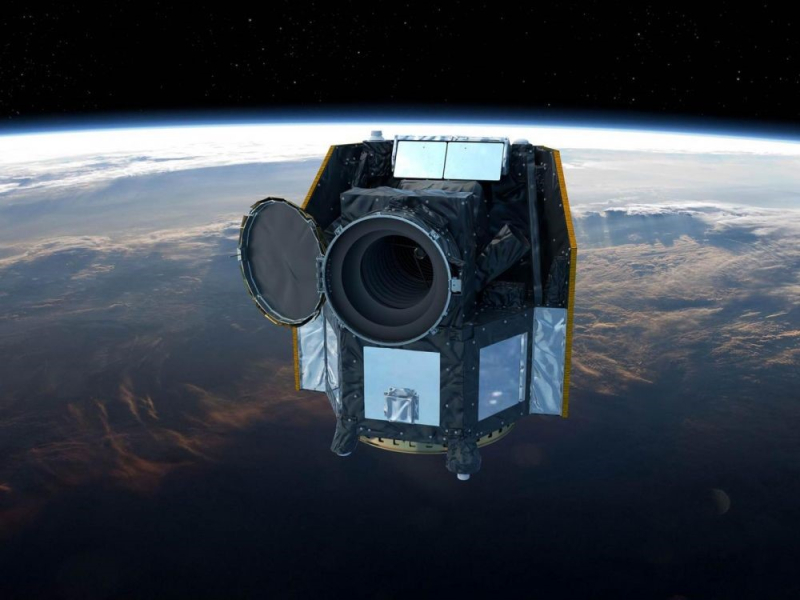This young white star of the southern hemisphere is located in the constellation of Peacock, 95 light-years away from the Earth and has a surface temperature of 7,800 Kelvin (7500 ºC). It is barely 20 million years old.
The observation of comets in this system can help us to understand what our solar system looked like at the same age, and then how it has evolved until today, 4.5 billion years later. Exo-comets, i.e. comets orbiting a star different from the Sun, had already been detected in this system in 2014, but as gas clouds. Here, the diameter is comparable to the size of the nuclei of Solar System comets, which places the exo-comets of HD 172555 in a similar class of objects as these.
Using the European CHEOPS satellite, an ESA S mission launched in December 2019, the team recorded the brightness variations of the HD 172555 system continuously for 2 consecutive days, with a photometric accuracy of only 0.2 per thousand. This is the first-ever continuous monitoring of this star to date. The precision of the CHEOPS observations has allowed to detect the signature of an extrasolar comet of 5 km in diameter passing in front of this star.
HD172555 becomes the only other system with the famous Beta Pictoris where extrasolar comets have been both discovered and confirmed by several instrumental means. This discovery feeds the hope of one day comparing the composition of Solar System comets with that of comets located around other stars. The next discoveries on HD 172555 are perhaps for soon, because the Hubble Space Telescope will observe this system in March and June to study the gas of its comets.


